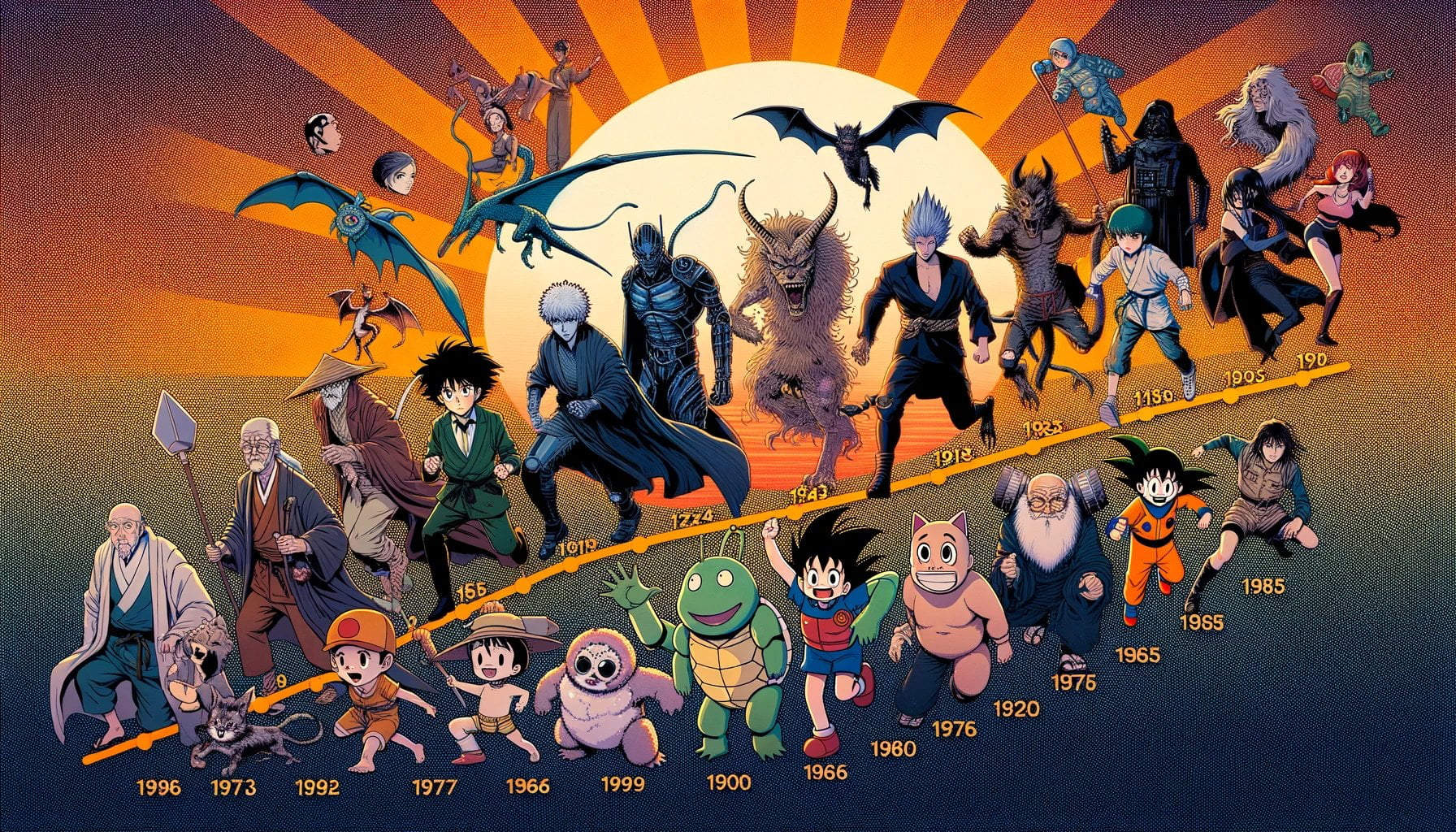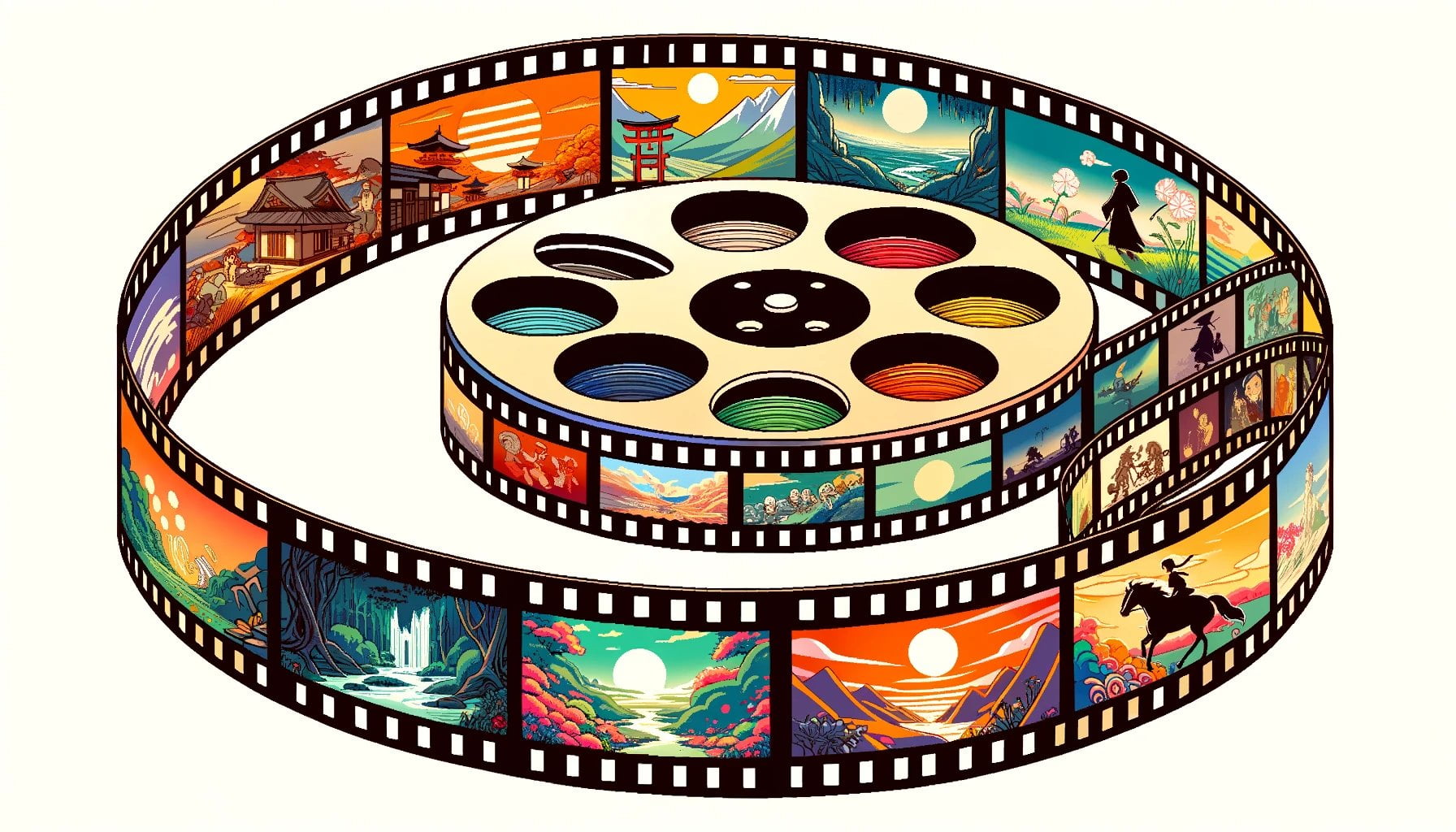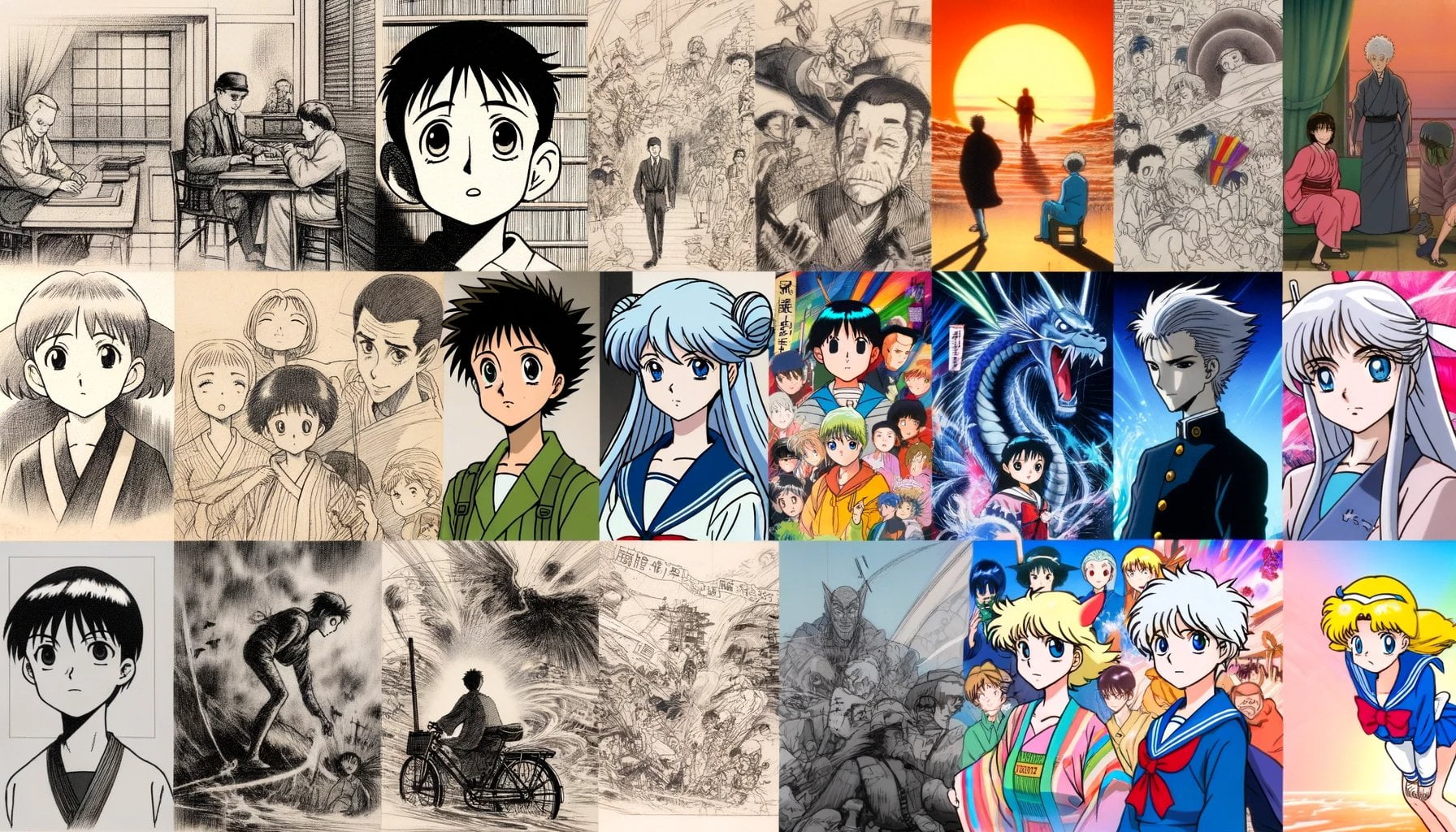Discover the enigmatic history of Japanese animation as we delve into the milestones, cultural impact, and artistic achievements that have shaped this captivating genre. From its humble beginnings to its global influence, we explore the intricacies of Japanese animation and unravel the mysteries behind its enduring appeal. Join us on this fascinating journey as we unveil the secrets and uncover the fascinating stories behind this vibrant art form.

Key Takeaways:
- The origins of Japanese animation can be traced back to 1917.
- The first anime film released in Japan was “Katsudō Shashin” in 1907.
- The establishment of Tōei Dōga marked a significant milestone in the Japanese anime industry.
- The success of “Tetsuwan Atomu” (Astro Boy) led to a boom in anime popularity.
- Merchandising played a crucial role in the business model of television anime.
- Japanese anime gained popularity overseas, despite criticism from some adults.
- The term “Japanimation” was used in some countries to refer to Japanese anime.
- The history of anime in Japan dates back to the late 19th century.
- Anime films initially targeted the Japanese market and incorporated cultural elements.
- “Anime” began to replace “Japanimation” in the mid-1980s.
- Anime has become a global cultural phenomenon and continues to grow in popularity.
Japanese Animation History
Japanese animation, or anime, has a rich and captivating history that has captivated audiences around the world. From its humble beginnings to its global phenomenon status, the evolution of Japanese animation is filled with fascinating milestones and cultural impact. In this article, we will uncover the enigmatic history of Japanese animation, exploring its key milestones and its enduring cultural significance.
Origins of Japanese Animation
Japanese animation traces its roots back to the early 20th century. The first animated film released in Japan, known as “Katsudō Shashin,” debuted in 1907, marking the birth of anime. However, it was not until the establishment of Tōei Dōga that anime truly began to flourish. Ōkawa Hiroshi played a pivotal role in the emergence of Tōei Dōga, and his vision helped shape the industry.
The Rise of Anime: Astounding Success and Cultural Impact
One of the most significant moments in the history of Japanese animation was the introduction of the first television anime, Tetsuwan Atomu, also known as Astro Boy. This show became an unexpected hit, igniting an anime boom in Japan. With its success, the anime industry witnessed a surge in the production of television series, especially within popular genres such as science fiction and magical girls.
As television anime gained popularity, it also started to capture the attention of young people worldwide. Despite some criticism from adults who viewed it as cheap entertainment, Japanese animation started building a dedicated fanbase abroad. In some countries, the term “Japanimation” was even coined to refer to this unique form of animation.
Cultural Significance: Anime’s Global Reach
Contrary to popular belief, the history of anime extends further than many people realize. Its origins can be traced back to the late 19th century, where early pioneers explored animation techniques that would later influence the development of anime. Anime films were initially intended for a Japanese audience and incorporated cultural elements specific to the country.
In the mid-1980s, the term “anime” began to replace “Japanimation,” reflecting the growth and evolving identity of the medium. Anime’s immense cultural impact continued to unfold, transcending borders and captivating audiences worldwide. Today, anime is a global phenomenon, with a devoted and passionate fandom that continues to grow.
Conclusion
The history of Japanese animation is a story of innovation, creativity, and cultural influence. From its early beginnings to its rise as a global cultural phenomenon, Japanese animation has captured the hearts of fans worldwide. It is through understanding its milestones and cultural significance that we can appreciate the enduring appeal and dynamic narrative of this vibrant industry.
The world of animation has a rich and fascinating history. From the first hand-drawn animations to the latest computer-generated masterpieces, the evolution of this art form is truly captivating. If you want to dive into the depths of animation history, click here to explore its timeline and discover the incredible milestones that have shaped the industry.
The emergence of iconic anime creators and studios
Japanese animation, known as anime, has a fascinating history that has captivated audiences worldwide. From its humble origins to its current cultural impact, anime has evolved into a dynamic and influential art form. One crucial aspect of anime’s success lies in the emergence of iconic creators and studios who have made significant contributions to its development and popularity.
Early Beginnings and Influential Pioneers
The roots of anime can be traced back to traditional Japanese art forms, demonstrating the nation’s rich artistic heritage. In the early 20th century, filmmakers in Japan began experimenting with animation techniques, laying the foundation for what would become the anime industry. Two individuals, in particular, stand out as pioneers in this field: Mitsuyo Seo and Tezuka Osamu.
Seo’s works, such as “Momotaro: Umi no Shinpei,” released in 1945, showcased the potential for anime to convey powerful messages and resonate with audiences. Meanwhile, Tezuka Osamu, often referred to as the “God of Manga,” revolutionized the industry with his innovative storytelling techniques and iconic characters like Astro Boy.
The Global Rise of Anime
Over time, anime started gaining international popularity, attracting a devoted fanbase worldwide. The late 20th century marked a significant turning point for anime, with influential series like Pokémon and groundbreaking films like Hayao Miyazaki’s “Spirited Away” capturing the hearts of viewers beyond Japan’s borders. These works not only showcased the creativity and daring nature of anime but also contributed to its exponential growth in popularity.
Anime as a Medium and Its Enduring Appeal
Anime, as a storytelling medium, emerged from the manga tradition in Japan, evolving into a distinctive art form that pushes boundaries and embraces complexity. While the concept of anime initially referred to Japanese-made animation, today, it encompasses various styles and works created globally. This inclusiveness highlights the far-reaching impact and enduring appeal of anime.
Influential Creators and Studios
Within the vast landscape of anime, numerous creators and studios have left an indelible mark on its history. These icons have shaped the industry through their visionary storytelling, innovative techniques, and unforgettable characters. From Studio Ghibli, responsible for enchanting films like “My Neighbor Totoro” and “Princess Mononoke,” to Hideaki Anno, the mastermind behind the thought-provoking series “Neon Genesis Evangelion,” these creators and studios represent the best of anime’s creative prowess.
Key Takeaways:
- Anime originated from traditional Japanese art forms, with filmmakers experimenting with animation techniques in the early 20th century.
- Mitsuyo Seo and Tezuka Osamu are iconic pioneers who laid the groundwork for the anime industry.
- The global popularity of anime soared with the release of influential series and films, such as Pokémon and “Spirited Away.”
- Anime encompasses a wide range of styles and stories and has become a global phenomenon.
- Iconic anime creators and studios, such as Studio Ghibli and Hideaki Anno, have played a pivotal role in shaping the industry’s history.
By exploring the emergence of these iconic anime creators and studios, we gain a deeper understanding of the art form’s evolution and appreciate the unique talents that have made anime a beloved and enduring form of entertainment.
The global impact and influence of Japanese animation
Japanese animation, or anime, has undeniably made a profound impact on global culture. With its distinct art style and captivating storytelling, anime has introduced many aspects of Japanese culture to the world. But how did anime become a worldwide phenomenon? Let’s delve into its enigmatic history and explore the key milestones that have shaped its global impact and influence.
Evolution after World War II
After World War II, Japanese animation was heavily influenced by Western animation, particularly American cartoons. This influence can be seen in the character design, storytelling techniques, and art style of early anime. However, as time went on, anime began to develop its own unique identity, blending traditional Japanese art forms with Western animation influences.
Crossing Boundaries and Transcending Cultures
Anime has transcended boundaries and become a global phenomenon, influencing popular culture and animation worldwide. Its themes and narratives resonate with audiences from different cultural backgrounds. Through its captivating storytelling and diverse characters, anime has been able to connect with people on a universal level, fostering a dedicated and passionate fandom across the globe.
Technological Advancements and Innovation
Information technology has played a significant role in the growth of the anime industry. The use of new technologies, such as 3Dcg, Flash, and digital drawing, has revolutionized the production process of anime, allowing for more intricate and visually stunning animations. These advancements have not only improved the quality of anime but also expanded its reach to wider audiences through online streaming platforms.
Government Support and Economic Value
Recognizing the economic and cultural value of anime, the government of Japan has actively supported its development. This support has included funding programs, tax incentives, and the establishment of organizations dedicated to promoting and preserving anime. Such initiatives have contributed to the anime industry’s record-breaking revenues in recent years, both domestically and internationally.
Influence on Western Animation
Anime has left a lasting impact on Western animation. Its unique art style, intricate character designs, and non-linear storytelling techniques have influenced numerous Western animators and filmmakers. The impact of Japanese animation can be seen in the way characters are drawn, storytelling techniques, and the overall aesthetic of Western animation. Anime has truly become the “Disney of the East,” asserting itself as a major player in the global animation industry.
Key Takeaways:
- Anime has introduced many aspects of Japanese culture to the world and has a profound impact on global culture.
- Japanese animation was initially influenced by Western animation after World War II but developed its own unique identity over time.
- Anime has transcended boundaries and connected with a diverse worldwide audience, building a passionate fandom.
- Technological advancements have transformed the production process of anime, resulting in visually stunning animations.
- The government of Japan recognizes the economic and cultural value of anime and actively supports its development.
- Anime’s influence can be seen in Western animation through character design, storytelling techniques, and overall aesthetic.
The global impact and influence of Japanese animation cannot be underestimated. Its evolution, cultural significance, and artistic achievements have captivated audiences worldwide. As anime continues to push boundaries and innovate, it is likely to remain a vibrant and influential force in the world of animation.
The Enduring Popularity and Evolution of Japanese Animation
Japanese animation, or anime, has captivated audiences around the world with its unique storytelling, breathtaking visuals, and diverse content. Over the years, anime has evolved from its early beginnings to become a global cultural phenomenon, leaving a lasting impact on the entertainment industry. Let’s delve into the enigmatic history of Japanese animation and explore its enduring popularity.
Origins and Early Development
The origins of Japanese animation can be traced back to 1917 when Japan began experimenting with animation techniques. Through trial-and-error drawing and cutout animation, the foundation for anime was laid. These early animations drew inspiration from traditional stories, bunraku theater puppets, and ukiyo-e prints, paving the way for the development of iconic anime characters.
The Anime Boom in Japan
In the 1960s, anime films and television series gained immense popularity in Japan, sparking what would later be known as the “anime boom.” These early anime works were initially intended for the Japanese market, incorporating cultural references unique to Japan. However, their impact extended far beyond entertainment, influencing the way characters were drawn and stories were told in Western animation.
The Evolution of Japanese Animation
The evolution of Japanese animation can be observed through different eras, each marked by new trends and phenomena. The 1960s, 1970s, 1980s, and 1990s brought forth significant milestones and iconic moments in anime history. From the emergence of Tōei Dōga, a prominent animation studio, to the proliferation of “Japanimation” fans, these eras defined the evolution of anime.
Impact and Global Fandom
Anime’s enduring popularity can be attributed to its exceptional quality, unique storytelling, and cultural resonance. Its rich history and diverse content have captivated audiences, both in Japan and abroad. Series like Pokémon and films like “Spirited Away” have helped anime gain global recognition and build a dedicated and passionate fandom worldwide.
Anime’s Cultural Significance
Academia has recognized the significance of anime, leading to its exploration and study in scholarly research and books. Anime has transcended boundaries, reshaping the storytelling and aesthetic norms of the animation medium. Its impact on global culture is undeniable, influencing Western animation in terms of art style, character design, storytelling techniques, and overall aesthetic.
Key Takeaways:
- Japanese animation, or anime, has a rich and captivating history, dating back to its origins in the early 20th century.
- Anime gained global popularity in the 1960s and has since become a worldwide cultural phenomenon beyond entertainment.
- The evolution of Japanese animation can be observed through different eras, each marking new trends and phenomena.
- Anime’s enduring popularity can be attributed to its exceptional quality, unique storytelling, and cultural resonance.
- Anime has had a profound impact on global culture, shaping the animation medium and influencing Western animation in various aspects.
By exploring the enduring popularity and evolution of Japanese animation, we gain a deeper understanding of its cultural significance and lasting impact. Whether you are a devoted anime fan or simply interested in understanding the history of animation, the world of anime invites us to appreciate its artistry, creativity, and captivating storytelling.

FAQ
Q1: What are the origins of Japanese animation?
A1: The origins of Japanese animation can be traced back to the early 20th century, with the earliest films dating from 1917. The first animated film released in Japan, and therefore the first anime, was called “Katsudō Shashin” in 1907.
Q2: Who are considered pioneers of anime?
A2: Mitsuyo Seo and Tezuka Osamu are considered pioneers of anime and laid the foundation for the anime industry today.
Q3: When was the first full-length Japanese animated film released?
A3: The first full-length Japanese animated film, “Momotaro: Umi no Shinpei,” was released in 1945.
Q4: How did anime gain international popularity?
A4: Anime began to gain international popularity in the late 20th century, with series like Pokémon and films like Miyazaki’s “Spirited Away.”
Q5: What is the influence of anime on Western animation?
A5: Anime has influenced Western animation in terms of character design, storytelling techniques, and art style.















